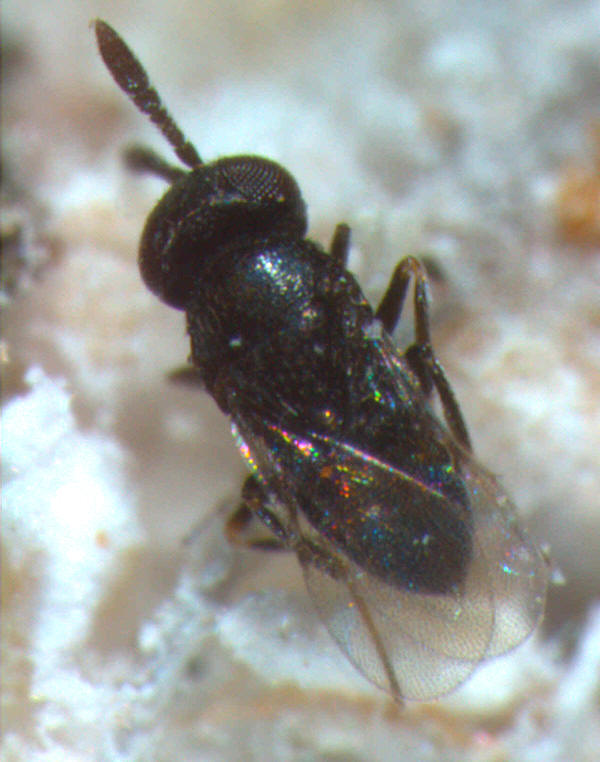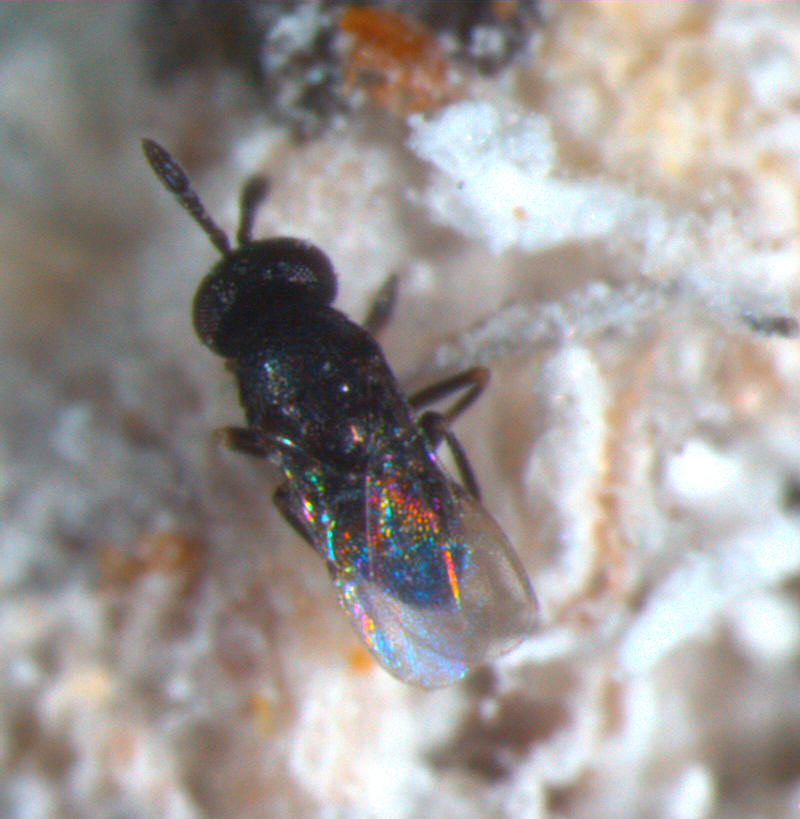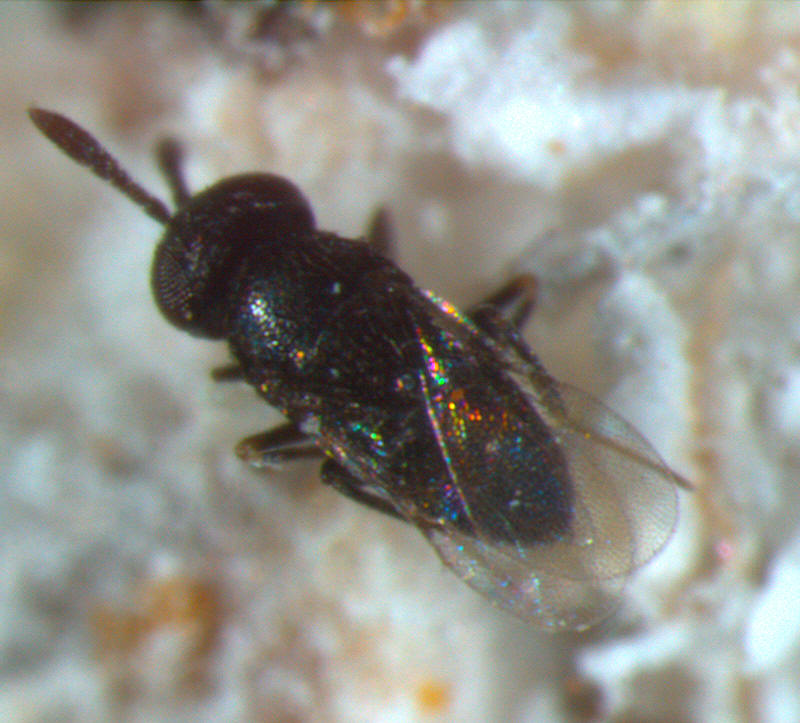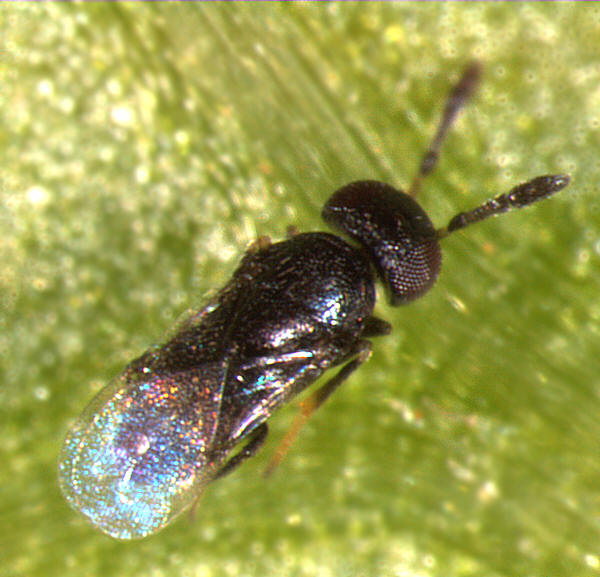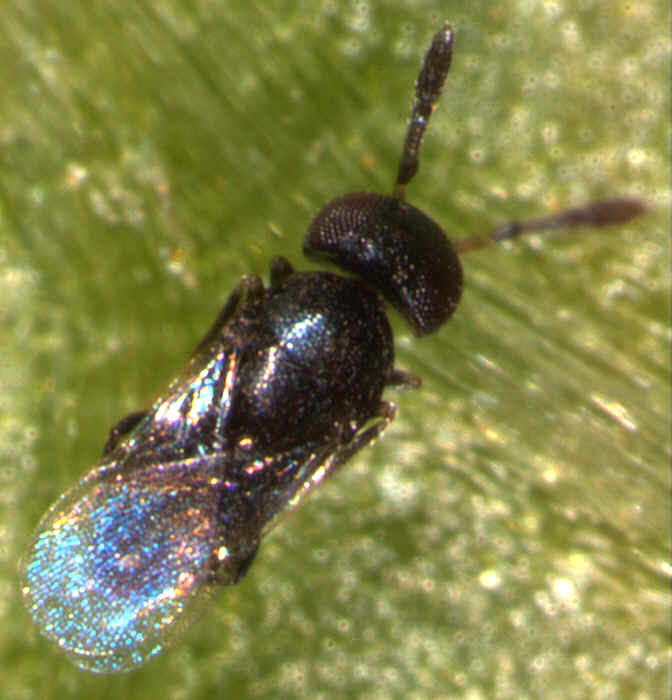 |
Scientific nameCoccidoxenoides perminutus Girault (=Pauridia peregrina Timberlake, Coccidoxenoides peregrinus (Timberlake))
Taxonomic positionHymenoptera: Chalcidoidea: Encyrtidae: Tetracneminae
DiagnosisBody more or less completely black or dark brown with metallic reflections. Antenna
11-segmented, funicle 6-segmented, funicular segments 1-5 distinctly transverse, somewhat flattened, segment 6 slightly longer than 4+5, club 3-segmented in female and single-segmented in male. Mesoscutum with notaular lines present in anterior third, with strong reticulate sculpture. Scutellum distinctly, but slightly less strongly sculptured throughout. Fore wing hyaline, area behind venation and proximal part of parastigma setose, parastigma distinctly swollen, marginal vein longer than broad, postmarginal vein distinctly shorter than stigmal vein.
Only species known of Coccidoxenoides, commonly associated with Planococcus spp. 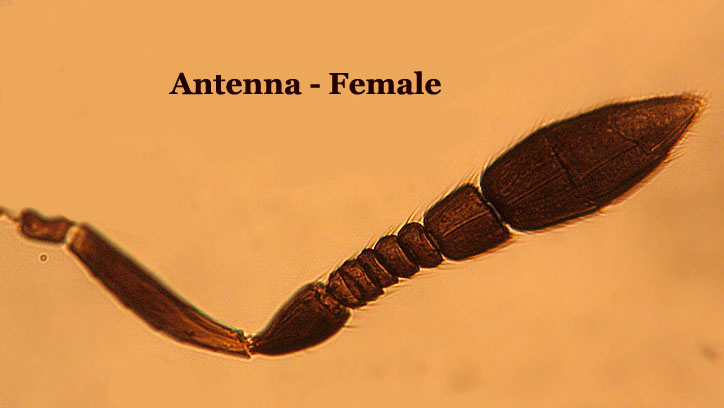
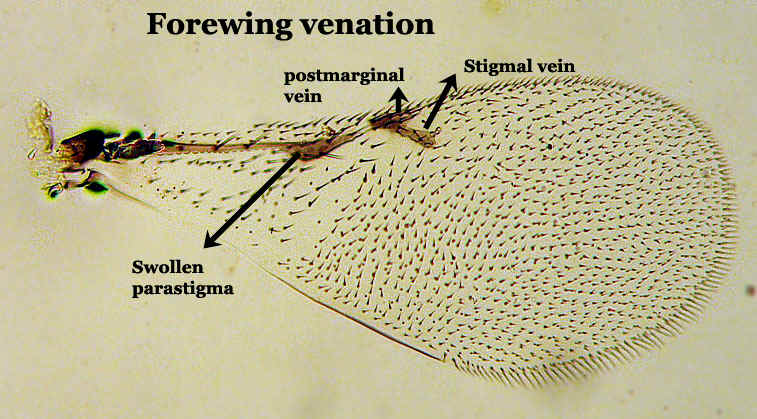 Antenna and fore wing venation
Antenna and fore wing venation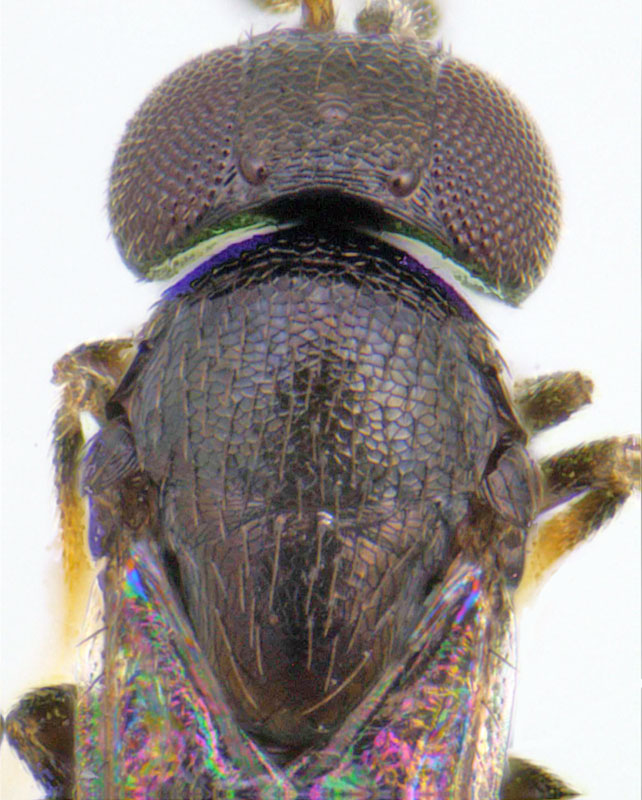 Head and thorax, dorsal view
Head and thorax, dorsal view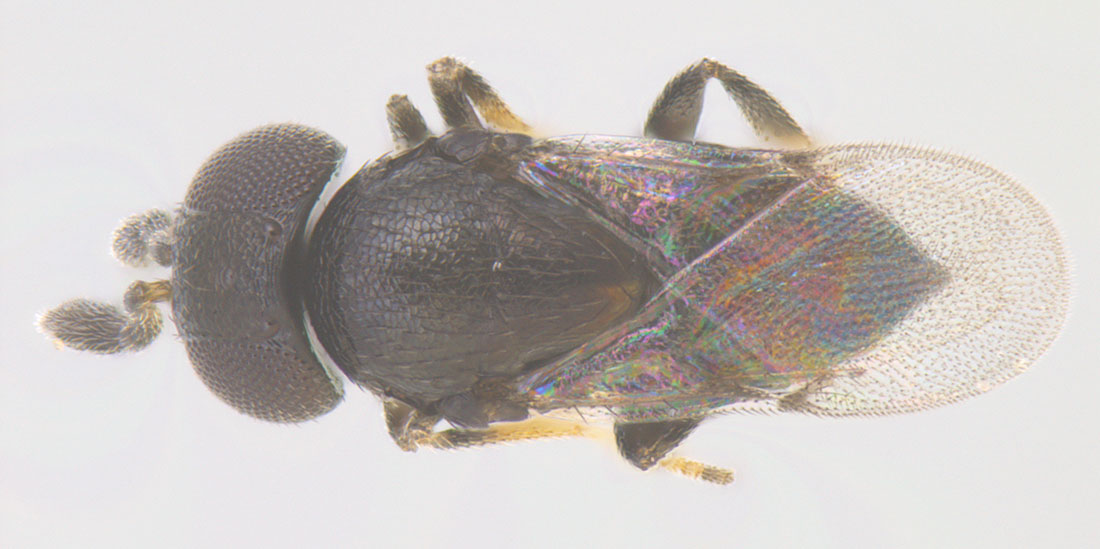 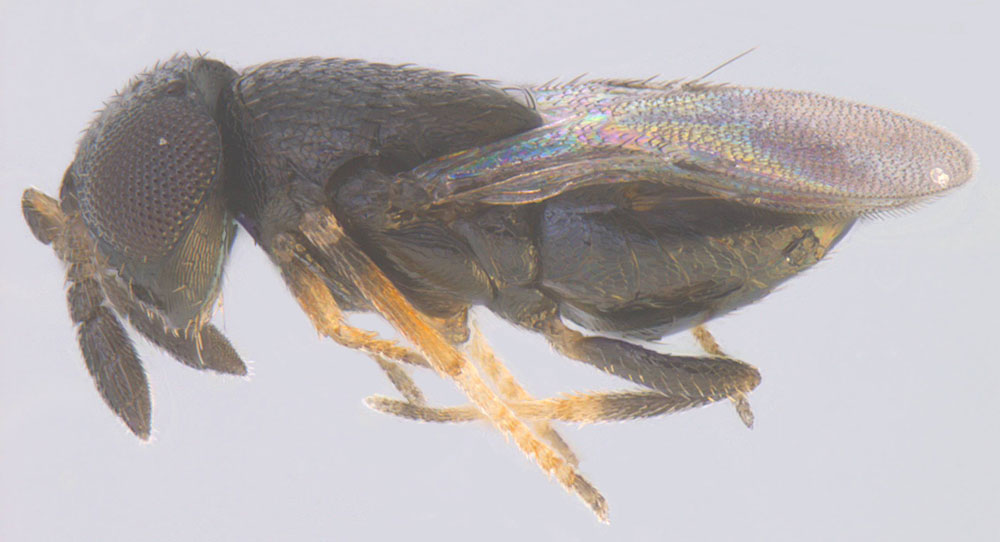 Adult female - dorsal and lateral view Adult female - dorsal and lateral viewImagesDistributionIndia (Karnatka; West Bengal), Pakistan, Australia, USA (Hawaii), widely distributed in the circumtropical and subtropical regions of the world (Hayat, 2006).
Hosts / BiologyParasitic on Planococcus citri (Risso), P. lilacinus (Cockerell),
Ferrisia virgata (Cockerell), and Maconellicoccus hirsutus (Green) (Hemiptera: Pseudococcidae) (Hayat, 2006). See Universal Chalcidoidea Database for complete list of hosts and associated plants.
References
|
